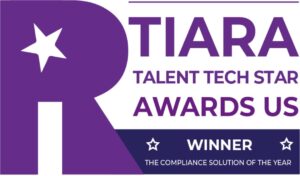For years, access to a professional setting has not been the only issue employees faced at work. Once in the workplace, employees have experienced unreceptive and alienating environments related to differences in age, gender, sexuality, appearance, nationality, socio-economic background, education, and other distinctions.
Many of us in HR easily recall how hot a topic unconscious bias awareness was before the pandemic. Still, many organizations have (perhaps understandably) allowed bias to take the backseat. What remains clear, though, is that – despite the trainings and and overall discussions of awareness – unconscious bias still impacts the workplace in nearly every organization. As an example, recent research suggests that unconscious bias continues to play a role in the reduction of female physicians across the United States. Companies have been found to have decreased efforts to improve gender diversity and the pandemic has created new hurdles for women trying to break through the traditional glass ceiling.
Contrary to what we see with civil rights and other anti-discrimination laws, there are no effective compliance requirements that ensure a welcoming workplace for all by focusing on the apparent impact that unconscious bias has. Because of this, companies need to continue to work to create more inclusive, diverse, and equitable workplaces – a focal point that may cause some organizations to rise above their competitors in a job market where many organizations have found themselves competing over smaller pools of qualified candidates.
As organizational leaders, it is our responsibility to set an example and champion a culture of change. We are in a unique position to promote and prioritize unconscious bias discussions and awareness across the workplace, from recruitment to promotions to the assignment of projects.
Back To The Basics: What Is Unconscious Bias And Why Does It Matter?
Unconscious biases (UB) are stereotypes about certain groups of people that individuals form outside their own conscious awareness. Everyone holds unconscious beliefs about various social and identity groups, and unconscious biases are often incompatible with one’s conscious values. UB associations may lead to subconscious discrimination against people we associate with negative traits, even if we do not consciously intend to do so. Put simply, UB means we may unknowingly treat our colleagues differently, even if we actively believe otherwise.
Learning about UB is important – particularly for those in leadership positions – because it helps us become aware of our biases and reduces the potential application of these biases in our organizations. In the employment context, research has found that implicit bias towards women results in less hiring, fewer promotions, and a lack of opportunities in science and technology fields.
A more pressing argument for promoting UB awareness is the finding that many White doctors unconsciously attribute negative descriptors such as “uncooperative” or “combative” to Black patients almost three times more than to White patients, potentially impacting the doctor-patient relationship and resulting in fewer referrals to specialists for additional medical assistance. Implicit bias training and culture champions could lead to improved quality of life and, in life-altering situations – even life-saving actions.
What does this mean for those of us in HR? Unfortunately, it suggests that UB not only changes how many of us interact with our colleagues, but also how our colleagues interact with our organization’s clients, customers, and partners.
How Will My Organization Benefit From Awareness?
UB awareness remains beneficial to all aspects of an organization’s culture. It enables employees to better execute fair and impartial business decisions and fosters a community amongst colleagues and coworkers. Organizations can also reduce hostile and uncomfortable work environments that may have ultimately led to harassment or discrimination claims.
HR leaders need to continuously hone their skill sets to better understand their own implicit biases that may be impacting their interactions with colleagues and other employees. HR is meant to be an impartial space to discuss workplace issues, but without continued UB awareness, HR may unknowingly manage conflict resolutions inconsistently due to their unchecked biases or even fail to notice the role that unconscious bias plays in the hands of decision-makers across their organization, beginning with talent recruitment and ending with separation from employment.
Even after the pandemic, UB awareness remains a key ingredient in the recipe for organizational success. Unconscious bias awareness creates more inclusive workplaces that also contribute to a culture of compliance. HR practitioners should consider investing time into coaching leadership teams on UB awareness to build a network of internal culture champions, further bolstering a culture of compliance. HR leaders should also implement strong compliance practices across their organizations to take the first step in ensuring UB awareness is foundationally cemented within their workforce. Without these compliance fundamentals, leadership won’t have the structural support from the organization to champion UB awareness.






